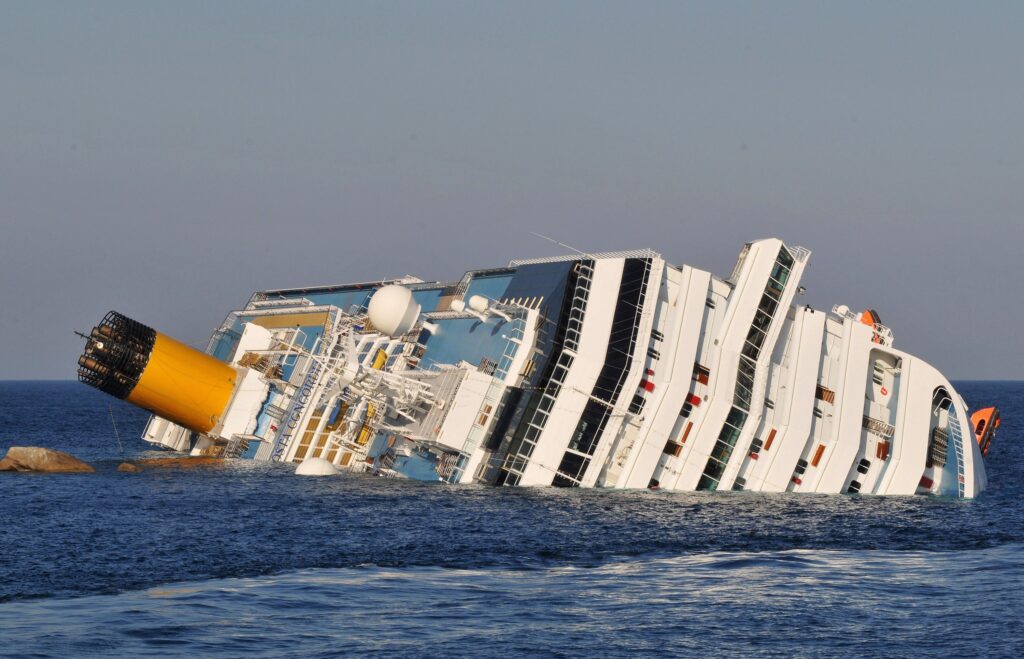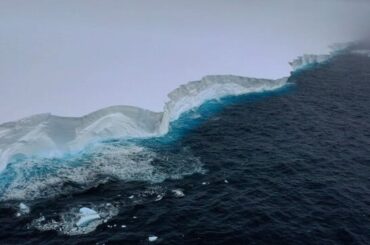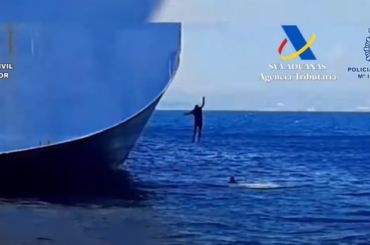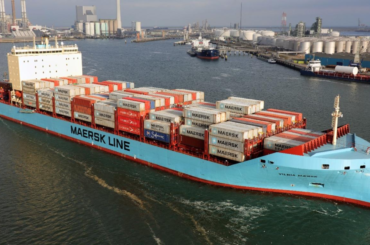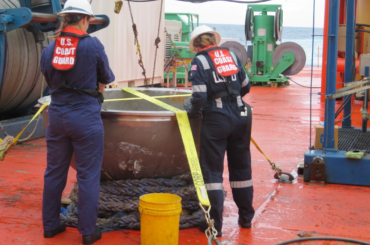Many historic naval disasters occur far out at sea, but the Costa Concordia sank just off the shore of an Italian island in very shallow water on January 13, 2012. The preventable accident claimed the lives of 32 passengers and left many others seriously injured, leaving authorities to ask why the luxury cruise ship was cruising so near to the land in the first place.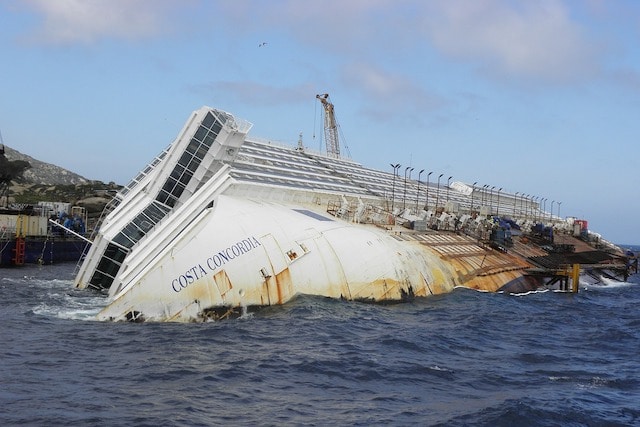
Prosecutors offered a tabloid-ready reason during the subsequent trial: the married ship captain had sailed so near to the island to impress a much younger Moldovan dancer with whom he was having an affair.
It’s arguable whether Captain Francesco Schettino was attempting to impress his girlfriend. (Schettino insisted on the ship sailing close to the shore to salute other mariners and provide an excellent view for passengers.) Whatever the reason for getting too close, the captain, four crew members, and one official from the ship’s corporation, Costa Crociere (part of Carnival Corporation), were held to be at blame for the accident and obstructing a safe evacuation by Italian courts. The shipwreck was not caused by bad weather or a malfunctioning ship; it was completely the result of a sequence of human errors.
“At any time when you have an incident similar to Concordia, there is never…a single causal factor,” says Brad Schoenwald, a senior marine inspector at the United States Coast Guard. “It is generally a sequence of events, things that line up in a bad way that ultimately create that incident.”
The Concordia was supposed to transport tourists from Civitavecchia to Savona on a seven-day Italian cruise. The ship, however, hit a reef known as the Scole Rocks after it deviated from its original course to sail closer to the island of Giglio. The ship was damaged by the impact, allowing water to seep in and endangering the 4,229 persons on board.
A “sail-by” is a maneuver in which a cruise ship sails close to the land to give passengers a good view or salute fellow sailors. It’s unclear how often cruise ships make these moves. Some people think they’re risky detours from planned routes.
“ The ship was sailing too close to the coastline, in a poorly lit shore area…at an unsafe distance at night time and at high speed (15.5 kts).” According to Italy’s Ministry of Infrastructures and Transports’ investigation report on the 2012 catastrophe.
Evidence provided in Schettino’s trial reveals that when assessing the damage to the Concordia, the safety of his passengers and crew was not his top priority. The ship’s electrical system was knocked out by the collision and water leak, and a recorded phone call with Costa Crociere’s crisis coordinator, Roberto Ferrarini, shows he attempted to downplay and cover up his actions by claiming the blackout was what caused the accident.
“I have made a mess and practically the whole ship is flooding,” Schettino told Ferrarini while the ship was sinking. “What should I say to the media?… To the port authorities, I have said that we had…a blackout.” (Ferrarini was later convicted for contributing to the disaster by delaying rescue operations.)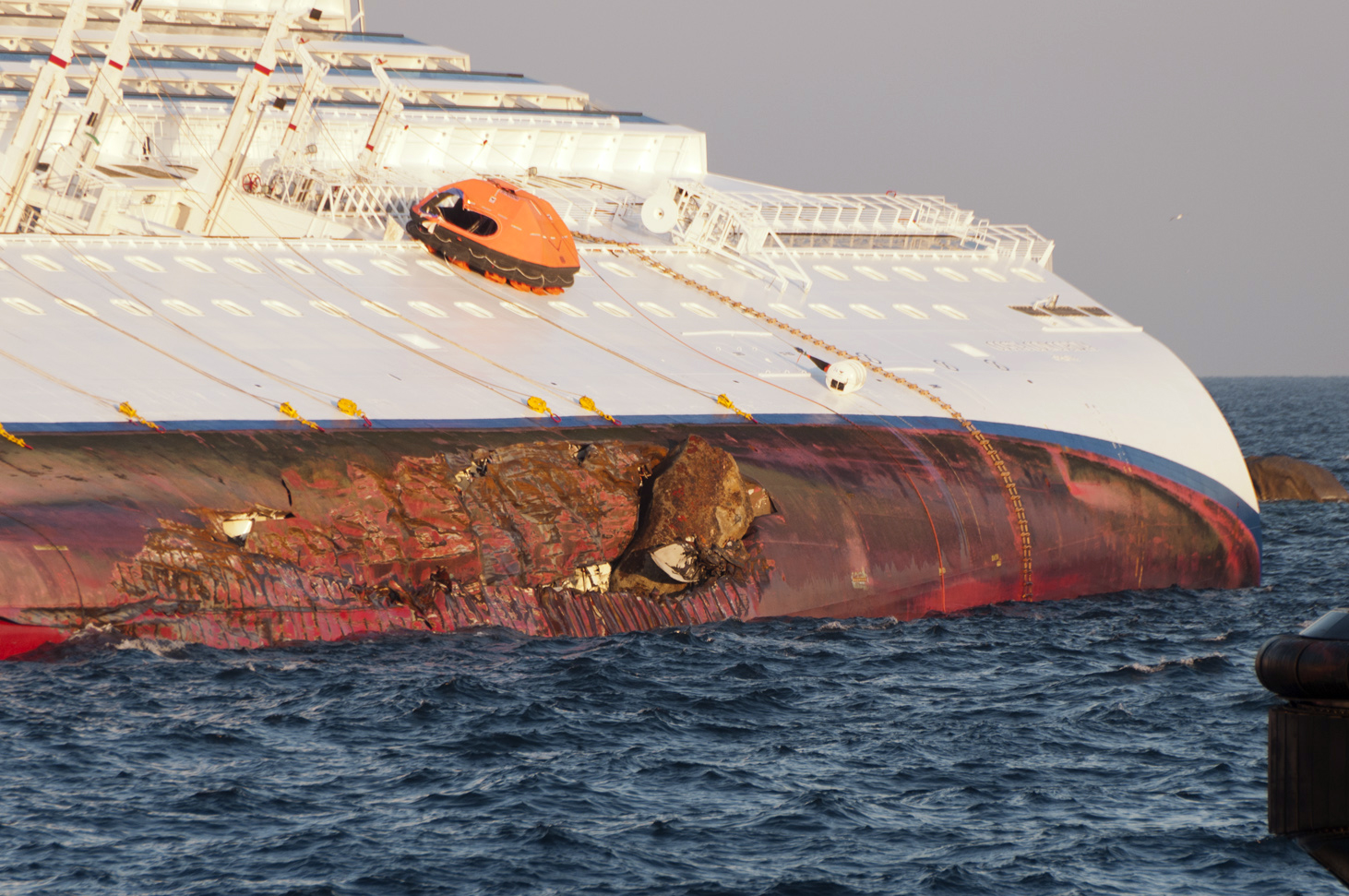
Despite the confusion, the captain managed to get into a lifeboat before the rest of the crew. On the phone, a coast guard member said angrily, “Get back on board, damn it!”—a recorded sound bite that became a T-shirt slogan in Italy.
Schettino argued that he fell into a lifeboat because the ship was shifting to one side, but his claim was rejected. Schettino was found guilty of manslaughter, causing a shipwreck, abandoning the ship before passengers and crew were evacuated, and lying to authorities about the accident by a court in 2015. He was granted a 16-year prison sentence.

